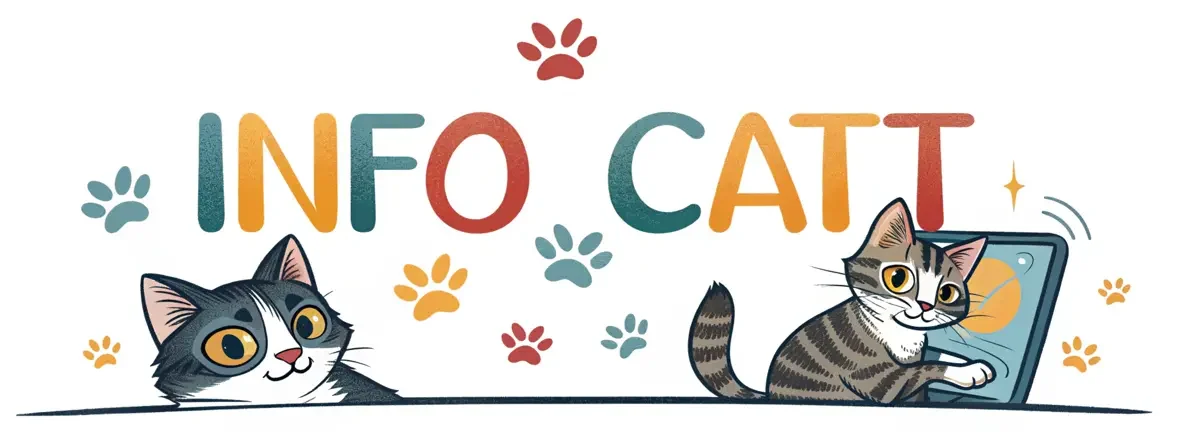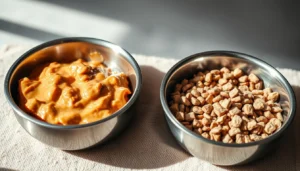Every cat owner faces the challenge of feeding a picky cat. It’s like trying to solve a puzzle. You’ve tried many things, but your cat still doesn’t want to eat.
Cats have special needs that go beyond just filling a bowl. Finding the right food for them is crucial. It must meet their health needs and please their taste buds.
This guide will help make mealtime better for both you and your cat. Whether your cat is young or older, we have tips to make feeding time fun and healthy.
Understanding Why Your Cat Has Become a Selective Eater
Figuring out why your cat is picky starts with knowing the reasons behind their behavior. Cats often choose what they eat carefully. This can be due to physical, emotional, or environmental factors.
When your cat won’t eat, it’s important to find out why. It’s not always just because they’re being stubborn. There are usually deeper reasons.
Medical Reasons Behind Picky Eating
Cats may stop eating for health reasons:
- Dental problems that make chewing painful
- Digestive disorders causing discomfort
- Underlying medical conditions that affect appetite
- Medication side effects
“A cat’s refusal to eat is often its way of communicating something is wrong.” – Veterinary Nutrition Expert
Behavioral Factors Affecting Food Preferences
To get a picky cat to eat, you need to understand their quirks. Cats develop preferences through:
- Past negative food experiences
- Learned preferences from kittenhood
- Sensory sensitivities to texture or smell
- Emotional state and stress levels
Environmental Influences on Eating Habits
Your cat’s eating environment affects their food choices. Things like feeding location, mealtime disruptions, and household dynamics matter a lot.
By knowing these factors, you’re closer to helping your cat eat well.
What to Feed a Picky Cat: Essential Nutrition Guidelines
Feeding a picky cat can be tough. But knowing their nutritional needs is crucial for their health and happiness. The best food for fussy eaters should have high-quality proteins that cats love.
When picking high-protein cat food, look for these important things:
- Animal-based proteins as the main ingredient
- Essential amino acids like taurine
- A balanced mix of nutrients
- Few artificial additives
Cats need meat-based proteins to stay healthy. Premium protein sources like chicken, fish, and turkey are great. They help keep muscles strong, boost the immune system, and support overall health.
Pro tip: Rotate protein sources to keep your cat interested and prevent mealtime boredom.
Wet food is a good choice for fussy cats because it’s moist and has more protein. Choose brands with minimal processing and top-notch ingredients for the best nutrition.
Every cat is different. Try various high-protein foods to find what your picky cat likes best.
Wet Food vs. Dry Food: Making the Right Choice for Finicky Felines
Choosing the right food for a picky cat is like solving a puzzle. Their diet affects their health, energy, and happiness. Knowing the difference between wet and dry food can help you make a good choice.
Cats are known for being picky eaters. Each food type has its own benefits, making the choice between wet and dry food complex.
Benefits of Wet Food for Selective Eaters
Wet food has several benefits for picky cats:
- It has more moisture, which helps with hydration
- Its strong smell can attract finicky eaters
- It’s softer, making it easier for cats to eat
- It’s often more appealing to cats with low appetites
“Wet food can be a game-changer for cats who turn their nose up at traditional dry kibble.” – Veterinary Nutrition Expert
When to Choose Dry Food Options
Dry food also has its advantages for picky cats. Consider these points:
- It helps keep teeth clean with its crunchy texture
- It’s easier to store and serve
- It’s often cheaper
- It helps maintain dental health
Mixing Both Food Types Successfully
The key to pleasing your picky cat might be a balanced approach. Mixing wet and dry food can offer a variety of nutrients and make meals more exciting. Start with small amounts and adjust based on your cat’s taste.
Remember, every cat is different. Watch how your cat reacts, talk to your vet, and be patient in finding the right meal plan.
Homemade Cat Food Solutions for Selective Eaters
Preparing homemade cat food can change the game for pet owners. If your cat doesn’t like commercial food, making your own might be the answer. This way, you can pick the ingredients and match them to your cat’s taste.
For another irresistible food option, try our How To Make Best Tuna Cat Treats—a simple way to please your cat’s picky palate!
Creating homemade cat food needs careful planning. Your cat needs a diet full of protein, fats, and vitamins. It’s wise to talk to a vet before starting homemade food for your cat.
- Protein sources: Chicken, turkey, fish
- Essential supplements: Taurine, calcium
- Recommended protein percentage: 50-60%
Begin with simple recipes using proteins your cat likes. Try different textures and temperatures to make it more appealing. Some cats like their food a bit warm or finely chopped.
Pro tip: Introduce new homemade recipes gradually to avoid digestive issues.
It’s important to watch how your cat reacts to homemade food. Look for changes in appetite, energy, and health. Regular vet visits will make sure your cat’s food is right.
Smart Feeding Strategies to Encourage Better Eating Habits
Changing mealtime for a picky cat can be tough. But, with the right strategies, you can make it more fun and regular. It’s all about patience and creativity to make food more appealing.
Cats are very picky about their food. How you feed them can really affect their appetite.
Proper Food Temperature and Presentation
Temperature is key when it comes to feeding a picky cat. They like their food a bit warm, like their body temperature. Here are some tips:
- Warm wet food for 5-10 seconds in the microwave
- Avoid serving cold food directly from the refrigerator
- Use a shallow dish to prevent whisker fatigue
Establishing Feeding Routines
Feeding at the same times every day makes cats feel secure. This can encourage them to eat more. Try these routines:
- Feeding at the same times each day
- Creating a quiet, calm eating environment
- Removing uneaten food after 30 minutes
Using Food Puzzles and Interactive Feeders
Interactive feeding can be fun for your cat. Food puzzles make mealtime exciting and keep their minds active.
Cats are natural hunters – turning meals into a game can spark their interest!
Trying out these strategies can help your picky cat enjoy their meals more. And, they’ll stay well-nourished too.
Natural and Commercial Appetite Stimulants That Work
Dealing with a cat who won’t eat can be tough. Appetite stimulants for cats might be the answer for pet owners with picky eaters. Knowing how to approach this can help get your cat excited about meals again.
Natural appetite stimulants are a great starting point. Here are some ideas:
- Nutritional yeast sprinkled on food
- Bone broth as a flavor enhancer
- Omega-3 fish oil supplements
- Probiotics designed for feline nutrition
Choosing healthy treats for picky cats is key. Look for high-protein options that mimic their natural hunting drive. Freeze-dried meat treats or small pieces of cooked chicken can really spark their appetite.
Commercial appetite stimulants are another good option. Your vet might suggest prescription meds like mirtazapine or cyproheptadine for serious eating issues. Always check with your vet before adding any new supplements or meds.
Pro tip: Warm your cat’s food slightly to release more aroma and make it more appealing.
By mixing natural methods with professional advice, you can help your picky cat enjoy meals again.
Conclusion: Creating a Sustainable Feeding Plan for Your Picky Cat
Finding the right food for a picky cat can be tough. But, with the right steps, you can change how your cat eats. Every cat is different, so finding the best food takes time and patience.
Your vet is key in making a good eating plan. They can tell you what your cat needs, check for health issues, and suggest special foods. Think of them as your guide to fixing your cat’s picky eating.
To make a lasting eating plan, you need to know your cat’s likes, try different foods, and keep meal times the same. It might take time, but small changes can help a lot. Things like how the food looks, feels, and where you eat can make a big difference.
Your love and effort will help your cat eat better. Keep trying, stay open-minded, and remember, it will get better with time. You can make meal times fun for your cat again.
FAQ
Why has my cat suddenly become a picky eater?
Several factors can make your cat picky. These include health issues, changes in their environment, dental problems, stress, or just a new food preference. If your cat’s eating habits change, it’s wise to check with your vet to rule out health problems.
How can I tell if my cat’s picky eating is a health concern?
Look for signs like weight loss, being tired, vomiting, or not eating at all. If your cat shows these signs or is picky for more than 24-48 hours, see a vet. They can check for serious health issues.
What are the best food options for a picky cat?
Choose foods high in protein and moisture, like their natural diet. Wet foods are good because of their smell and texture. Look for premium brands with real meat first, and try different flavors and textures.
How can I make mealtime more appealing to my finicky cat?
Warm the food a bit to make it smell better. Use food puzzles or interactive feeders. Also, have a regular feeding schedule. Try different temperatures and ways to serve food to make it more fun.
Is it safe to make homemade cat food for a picky eater?
Homemade cat food can be safe if done right. But, it needs careful planning to ensure it’s balanced. Talk to a vet nutritionist to make sure it meets your cat’s needs. Cats have specific dietary needs that can be hard to meet with homemade food alone.
Are there natural appetite stimulants I can try?
Yes, try bone broth, a little cooked chicken or fish, and catnip. But, introduce new foods slowly and in small amounts. If your cat still doesn’t want to eat, talk to your vet about safe options.
How much should I worry about my cat’s picky eating?
Some finicky behavior is normal, but long-term refusal to eat is a worry. Cats can get fatty liver disease if they don’t eat enough. If your cat won’t eat or is losing weight, get vet advice quickly.
Can changing my cat’s food help with picky eating?
Yes, changing food slowly can help. Start by mixing a little new food with their current food. Gradually increase the new food over 7-10 days. This helps your cat get used to new tastes and textures without upset stomachs.
Should I free-feed or stick to scheduled meals for my picky cat?
Scheduled meals are best. They help create a routine and make it easier to watch food intake. Remove uneaten food after 30 minutes to encourage eating at set times.



